Nov 01, 2023 | Flooring Canada
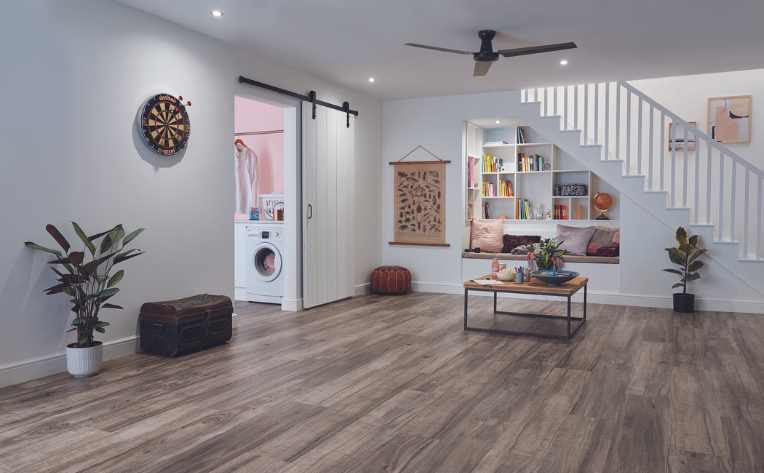
Basements have long been the scene of horror films and nightmares, evoking thoughts of dark, damp areas mainly used for storage. However, with some simple changes, such as new flooring, you can turn your basement into an inviting entertainment space or a cozy family room that you'll love spending time in. Flooring Canada proudly presents: The best flooring for basement!
Choosing the right flooring for your basement requires careful thought, and Flooring Canada is here to guide you through the process. With a wide variety of water-resistant flooring options available, including those suitable for damp areas or installations over concrete, you’re bound to discover a basement flooring option that fits your needs. If you're looking to enhance the functionality and beauty of your basement, it's essential to explore all of the best flooring choices for your space. Let's dive into the possibilities and unlock the full potential of your basement.
There are several major factors that you need to consider when it comes time to install new floors in your basement. A few key questions to ask yourself include:
Addressing these factors is crucial to determine the type of flooring you'll want to use.
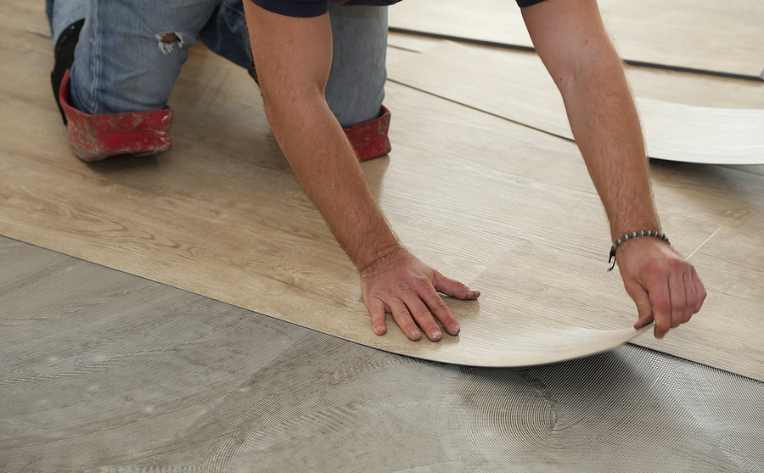
If your basement floor currently resembles a sidewalk—and not a freshly-paved one—you may have some work to do before you can install flooring on top of it. Before installing any type of flooring, you want to make sure the concrete floor is level and free of cracks. The concrete slab should be treated or addressed if moisture is an issue.
Once you've sorted out the basement subfloor, you can select the best type of basement flooring to fit your design and functional goals. Carpet, vinyl plank flooring, and ceramic or porcelain tile are all viable basement flooring materials. As always, other factors such as lifestyle, foot traffic, and usage plans for your newly finished basement will help drive selection. Additionally, the type of flooring you choose should factor in the moisture protective measures necessary for your basement renovation's lasting success. Your local Flooring Canada experts are happy to guide you through the best basement flooring options for your unique space. Learn more about the most popular types of basement flooring:
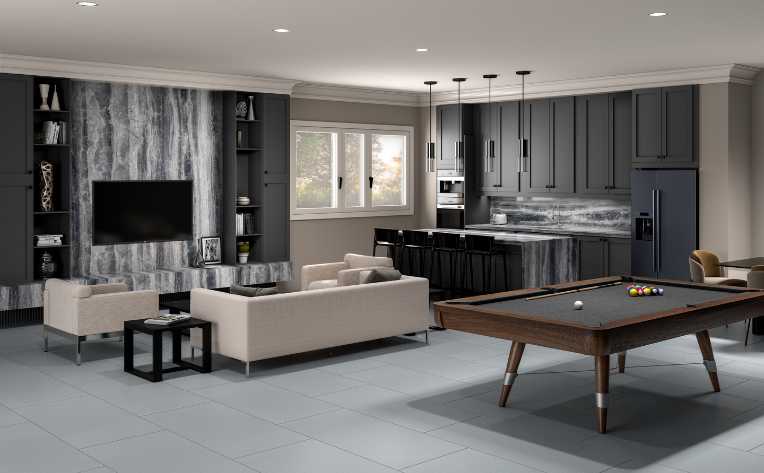
Cohesion by Daltile
While tile is a more significant investment than other types of flooring, it is meant to last. It’s durable, waterproof, stylish, and resistant to mold and mildew. If your basement is damp or tends to get flooded during storms, tile is a smart choice. Tile may make your basement look more high-end, but it will still be cold and hard underfoot, requiring you to wear fuzzy slippers during the cold months if you live in a seasonal environment. For warmer regions, tile brings much-needed relief from the heat and is a wonderful choice for your basement. Remember, you can always add an area rug for a soft, warm surface underfoot in the family room or basement hallway.
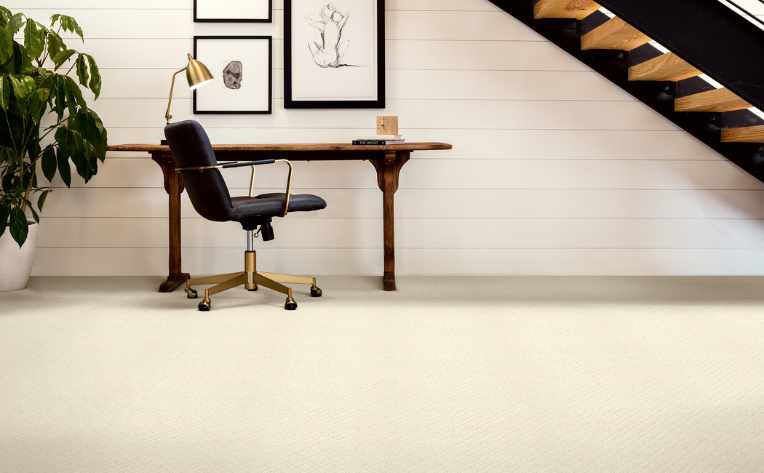
If you know your basement is damp and prone to floods, mold, and other moisture-related issues, it’s best to steer clear of carpet. But if you strongly desire the comfort of a carpet in your basement, underlay moisture-resistant pads and consider carpet tiles instead of wall-to-wall carpeting. Carpet tiles are easy to install and replace if they get wet, stained, or worn down. Choose a carpet tile with a dense, low pile for the most durability.
Cork is a great eco-friendly option for your basement floor. Cork's bacteria and water resistance make it work well in basements—and it’s soft underfoot, so no slippers are required. This type of flooring is perfect for homeowners looking to transform their basement into a playroom or a home gym. Offering similar performance, rubber flooring is another popular flooring choice for basement floors.
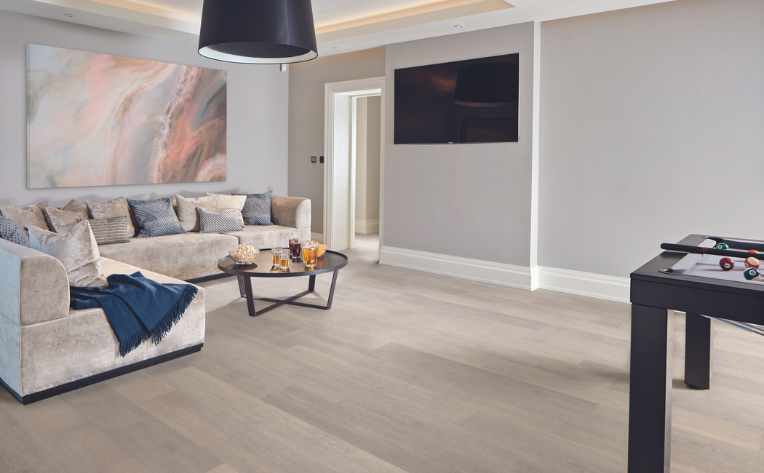
Luxury vinyl flooring is your best friend when it comes to basements. It’s waterproof, mold-resistant, and durable. Plus, it's available in a wide variety of designs that mimic the natural look and feel of hardwood or stone. While vinyl plank flooring is most comparable to ceramic tile in benefits and appearance, it is much less expensive and easier to install.
Now the decision to make here is between vinyl plank flooring and vinyl tile flooring. Both types can be installed right on top of concrete, as long as it is level. You can also install luxury vinyl tiles or planks as a “floating floor,” meaning it does not sit right on top of the subfloor. This involves installing underlayment, which makes the floor much more comfortable to walk on.
Unless you have a fairy-tale basement that has zero moisture, we recommend avoiding hardwood and laminate flooring for basements. They may look great and match the flooring in the rest of your home, but wood and laminate are prone to mold and water damage, which can cause them to warp. Because laminate is composed of a wood byproduct core, any moisture seeping through the subfloor will cause damage to the laminate planks. Instead, consider hardwood flooring or laminate flooring for your home's first and second floors.
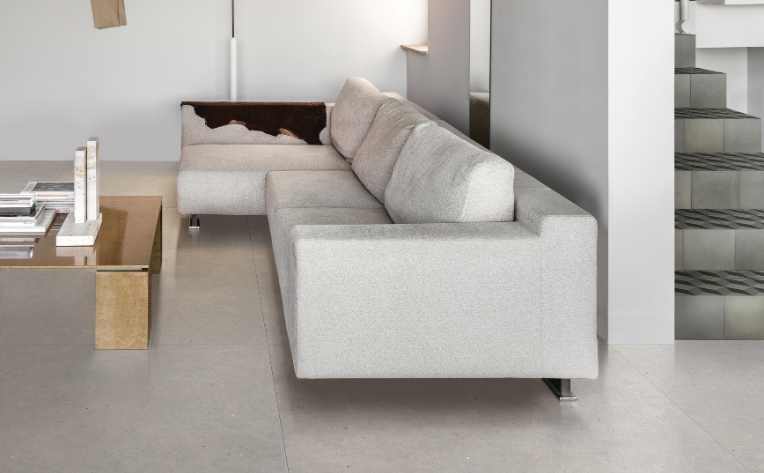
Mystone Moon Res Tile by Daltile
When seeking the best flooring for basements, waterproof options are key to ensure durability and longevity. Among the many basement floor ideas, one standout choice for its exceptional water resistance is luxury vinyl flooring. Engineered to withstand moisture, luxury provides a waterproof barrier that safeguards against potential basement issues such as dampness and flooding. Its versatility is matched by its resilience, making it an ideal choice for high-moisture environments. Additionally, ceramic tile or porcelain tile flooring emerges as another top contender for the best flooring for a basement. Known for their impervious nature, these tiles create a waterproof surface, effectively preventing water damage and providing a stylish aesthetic. When considering basement flooring, prioritizing waterproof features not only increases the lifespan of your investment but also protects your space against the challenges that may arise in below-grade environments.
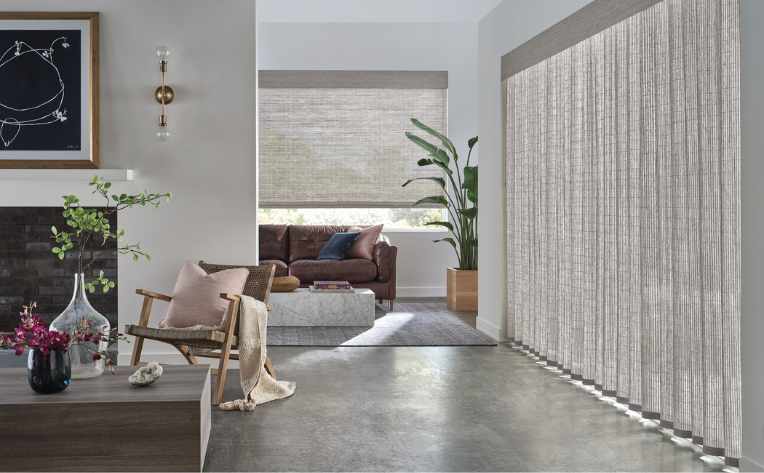
Woven Wood Roman Shades by Hunter Douglas
When considering the best flooring for a basement, concrete floors are often top contenders due to their durability and budget-friendliness. Finishing a concrete basement floor, though, requires careful deliberation to ensure a long lifespan and a stunning aesthetic appeal. Epoxy floor coatings are often a great way to update and protect your concrete flooring basement. Epoxy creates a seamless, durable surface that resists moisture, making it an ideal choice for basement environments prone to dampness. Not to mention, its smooth finish is easy to clean and maintain, providing a sleek and polished look.
The best way to transform your basement from a cobwebbed storage area to a real living space is to brighten up the floors. With the right flooring choice, you can revolutionize a cold, damp basement and create a warm, inviting space. Whether you’re redoing or finishing your basement, your local Flooring Canada experts are here to help. They’re happy to guide you through all of your flooring renovations and home improvement projects, so start your journey today!